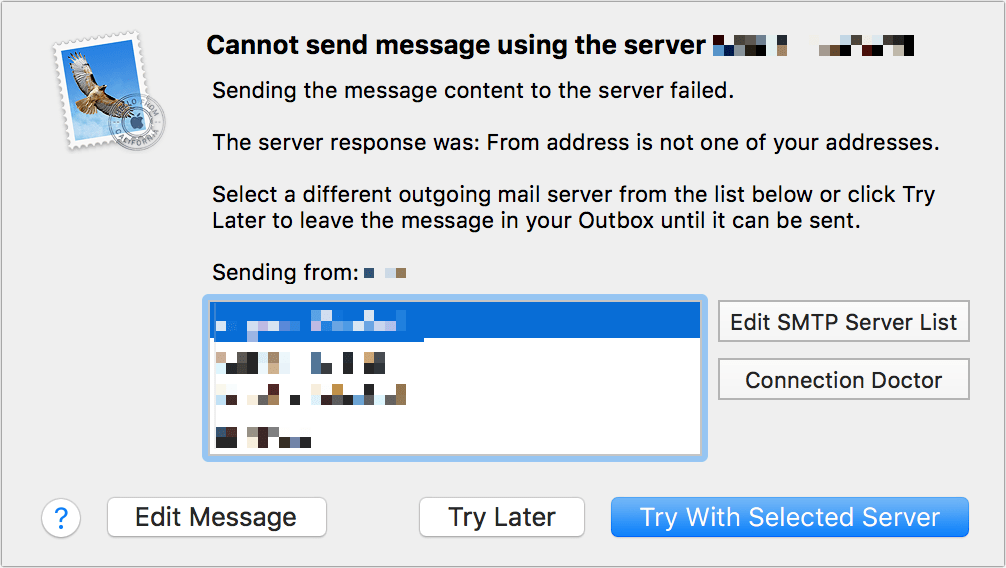Email began as a way to send a file between early interconnected computers without really checking who was sending what. Despite the 60 or so years that have passed, this is more or less what happens between modern mail servers when you send and receive messages. Email is, itself, a text file transmitted by your email application telling an email server in plain text who the message came from and who it is intended for.
The recipient must be valid for the message to be received, but not the sender. Even after decades of work to combat the root causes of spam and identity theft, there is no centralized, fully supported way to validate that the alleged sending email account was actually used. to send a message with a given email address. Spammers can forge “From” addresses, and email hosts do what they can to stop this, and it can trip you up.
How does sending an email work?
When you set up an email account (even though iOS, iPadOS, or macOS automatically handles the setup details for you), you identify yourself to the email host’s servers as authorized to send outgoing mail through them. (In the unstructured early days of the Internet, anyone could easily send email through any email server.)
This goes further with most email hosts today: the address you have registered with them for receiving email is also used as the address you use to connect to their outgoing server, and that’s often the only address from which the host’s servers allow access. their system. (For historical reasons, inbound and outbound email use completely different protocols, requiring separate connections, even if the login credentials are the same, for inbound and outbound servers. Today, most email Incoming emails are via IMAP; all outgoing emails use SMTP.)
This outbound “From” address limitation attempts to solve three problems at once. First, this means that you are the only legitimate party who can send emails using this address through the email host. This means your address cannot be spoofed with the host’s network.
Second, it provides useful details for automated software or individuals buried in mail headers (metadata hidden in a message but available in every incoming email message) to determine whether the message was sent by the email host that manages email for the sending domain. address, and therefore, by extension, sent by you.
Third, it prevents a malicious user of the mail host from sending outgoing messages with fake “From” addresses that are not controlled by the mail host, but rather by other mail hosts or companies. This helps the mail host block being a source of spam. (Many hosts have stated or hidden limits on the number of emails you can send per hour or day, the maximum number of different recipients among those messages, and so on, as with Apple’s limits on iCloud.)
It’s great when it works. But what happens when your email host decides your starting address isn’t correct? You may no longer be able to send emails.
Usually, you realize this happens when the Mail app (or other email program) displays an error received from the mail server when an outgoing message is not accepted. It usually reads something like: “The shipping address is not one of your addresses.” »

An error like the one above indicates that your email host will not allow you to send with a specified return email address.
Foundry
Try to resolve this issue in one of the following ways:
- Verify that your outgoing email address is one you can use with your email host. You can see this address configured in macOS in Mail > Settings/Preferences > Accounts. Select the email account from the list on the left, and then in Account Information, click E-mail address to see which addresses are in the list. Compare this with the information provided by your email host or available by logging into their website.
- Delete and re-enter your email server information. Although this shouldn’t be the case, sometimes settings can be irreparably broken. In the Mail Accounts dialog box above, select an account, click the – icon (minus sign) at the bottom of the list and confirm deletion. Then click on the + icon (plus sign) and re-enter your email host or ISP information. This might solve the problem, as frustrating as this requirement is.
- If everything looks OK, as it did for a igamesnews drive, contact the ISP and explain that your outgoing email address is not recognized, then state the error. If you can still log in with the same address and password to your account on the ISP’s website, a misconfiguration of the mail server on their end is responsible. You may have to go through two or three levels of support to find someone with the authority to speak to the technical team and confirm and resolve the issue.
This Mac 911 article answers a question submitted by igamesnews reader Joy.
Ask Mac 911
We’ve compiled a list of the questions we get asked most frequently, along with answers and links to columns: read our super FAQ to see if your question is covered. Otherwise, we are always looking for new problems to solve! Send yours to [email protected], including screenshots where applicable and if you would like your full name used. We will not answer all questions, we do not respond to emails, and we cannot provide direct troubleshooting advice.
In addition to email, you can submit your question to Mac 911 via the form below.




